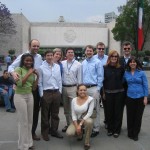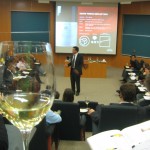Published on January 27, 2008.
My first step in selecting an MBA program was retrieving each of the published business school rankings. I then supplemented these rankings with additional criteria which were important to my decision. Finally, using the MBA program data published by US News, I was able to apply my criteria and weightings to each of the MBA programs and produce the following rankings:
| Rank |
School |
| 1 |
University of Virginia (Darden) |
| 2 |
Harvard University (MA) |
| 3 |
Dartmouth College (Tuck) (NH) |
| 4 |
Stanford University (CA) |
| 5 |
Yale University (CT) |
The criteria and weightings used to produce these rankings are as follows:
| Weight |
Category |
| 30% |
Reputation |
| 15% |
Selectivity |
| 15% |
Learning method |
| 15% |
Class size |
| 10% |
Undergraduate degree |
| 10% |
City size |
| 5% |
Placement |
Before discussing the weightings, let me provide some background on the originally published rankings and my additional criteria. When I first visited Darden it became apparent that the rankings did not capture many of Darden’s key advantages. For example, almost every visitor who observes a case discussion will agree that Darden offers a superior learning method. However, none of the published rankings use learning method as a criteria when comparing MBA programs. I therefore set about developing a more complete analysis that took into account this criteria along with three others. Here is what I choose:
Learning method – captures the teaching style and mix of learning methods employed by the MBA program. My preference was for programs that maximized the use of cases and active learning methods and minimized the use of lectures. This preference would also favor general management programs over more technically oriented programs (see The What and The How)
Class size – getting to know my classmates and having a sense of community within the program was an important objective, and one that would be significantly influenced by the class size. Within the 20 top schools as ranked by US News, the class size ranged from 171 at Emory-Goizueta to 910 at Harvard. Balancing between the advantages of a small and strong network vs. a larger and inherently weaker network, I gave the maximum score to schools with a class size between 250 and 350.
Undergraduate degree – having an undergraduate degree in engineering and a technical mindset, it was important for me to develop the less technical aspects of my business knowledge. Therefore, I preferred MBA programs that had a lower ratio of students with engineering, math, or science degrees. I was a little surprised at how much the MBA programs varied in this category. Within the 20 top schools as ranked by US News, the percentage of students with an engineering, math, or science degrees ranged from 21% at NYU-Stern to 61% at MIT-Sloan.
City size – in addition to the stronger sense of community enjoyed by schools in smaller cities, my wife and I also have a personal preference for smaller cities. Although this criteria is somewhat independent of the MBA program, the comfort of myself and family over the next two years was an important consideration. Therefore, I gave the maximum score to schools with a city size of under 1 million people.
In order to add these additional criteria the weighting of the original criteria must be reduced. This is fine because the reputation, selectivity, and placement scores suffer from measurement error and in some cases intentional rankings management. These are still good criteria, but should only account for about 50% of the total weighting for the following reasons:
Reputation – the US News reputation metric is based on a survey of MBA school deans and corporate recruiters. One drawback of this survey is the lack of a student perspective, which would provide some balance between the research ambitions of the deans and the teaching quality elements important to students. Additionally, corporate recruiters are concentrated on the first 1-2 years of employee performance, which favors more technical schools over the general management schools which are more focused on the long term horizon.
Selectivity – GMAT score and undergraduate GPA are the primary components of this category. From my conversations with professors and admissions staff, there is a fairly low correlation between these scores and a student’s performance as an MBA student. In fact, some admissions directors have expressed that students with the highest GMAT scores tend to have weaker essays. Admissions offices are constantly confronted with the moral dilemma of maximizing selectivity scores to improve the schools ranking vs. selecting the best student body.
Placement – this category is generally dominated by the average starting salary and bonus of graduating students. This metric can be further broken down to show that the mix of industries students pursue significantly impacts the placement score. In 2007, Darden students who accepted consulting and investment banking positions received about $21,000 more in first year compensation then the students who accepted general management positions. Thus, the placement category often reveals more about career interests of the student body then the schools overall placement effectiveness.



